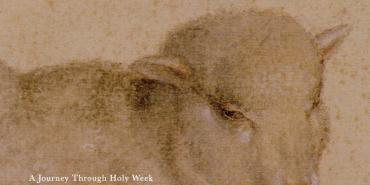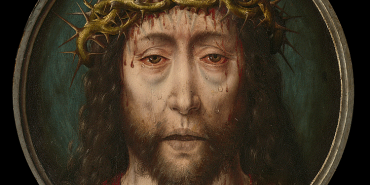The Beasts and Other Strange Creatures: Reading Apocalyptic Texts

Humans are curious creatures. We are eager to know the future. In fact, there is a branch of theology called “eschatology” which examines the doctrine of “last things.” Eschatology is better described as the direction and ultimate goal of God’s covenant faithfulness toward all of creation. In this sense, the story of Scripture is about the human condition and what God is doing about it.
There are a variety of ways in which Scripture foreshadows God’s ultimate purposes.
Old Testament examples include prophecies about a new covenant, the expectation of God’s Spirit poured out on all flesh, images of dry bones living, and the hope for a Messiah, to name a few.
There is also a particular kind of writing in the Bible that is full of images of strange beasts, catastrophic cosmic events, improbable occurrences, visions, and dreams. We refer to this type of writing as “apocalyptic.” The common thread in this kind of writing is the depiction of events beyond human control in vivid, almost cartoon-like images, signaling the need for divine intervention.
The Old Testament has several of these passages, with the most familiar being in Daniel 7-12 and Zechariah 1-8 and 14. Similar imagery occurs elsewhere, although not so widespread. Outside of Scripture, the Books of Enoch, the Apocalypse of Baruch, and 4 Ezra have similar characteristic symbols. This literary form flourished from about 200 BC to AD 200 and continues to have varied influence even today.
In the New Testament, many of the same images are reused. In Mark 13 and the parallel passages of Matthew and Luke, Jesus predicts the destruction of the temple, using imagery from Zechariah and Daniel 7, where the phrase “Son of Man,” which Jesus used to describe Himself, finds its roots. Similar language is used by Paul in the Thessalonian Epistles, but the Book of Revelation is the place where this imagery is most clearly seen.
It is also why this book is often called “The Apocalypse of John,” which unveils the “big picture,” the ultimate purposes of God, in visions.
Making Sense of Apocalyptic Imagery
Apocalyptic language is the voice of the oppressed. In that sense, it shares a similar origin to the Negro spirituals in American history or the music of Soweto during the Apartheid Era in South Africa. It cries out to God, “How long, O Lord?” but uses deliberately obscure and coded language.
The language makes sense to the first hearers but may be less clear to a later audience. It offers encouragement to people who are ground into the dust by injustice and oppression and invites people to open their eyes and see the big picture. The seers are given a vision of the ultimate direction of God’s good purposes. In doing so, it often offers a grotesque picture of oppressors.
For Daniel, his vision of the beasts strips the oppressing kingdoms of their humanity and belittles their power. The little horn speaking arrogantly in Daniel 7 is a caricature of Antiochus IV Epiphanes who desecrated the Temple in 164 BC. Daniel’s vision reminds readers that the real power remains with the Ancient of Days, who executes judgment on all the beasts, whatever current circumstances might suggest.
The context of Mark 13 is Jesus’ confrontation with the temple authorities which would soon lead to His crucifixion.
But the real power is not with them. The temple is doomed: there will not be one stone left upon another.
In the Apocalypse, the real power does not belong to the Roman Empire, regardless of how invincible it may appear. Its power is a mere parody. Real power rests with the One who sits on the throne, the Slaughtered Lamb.
There is something distinct about New Testament apocalyptic writers. God has already intervened through the Crucified One. The direction of God’s purposes is clear. The vision of the heavenly throne room reveals that the Slaughtered Lamb is seated at the right hand of God. The call for those who are suffering now is to look at the big picture of God’s purposes, and in the light of them, to live lives of faithful obedience. They are to trust God and replace despair with hope.
The Mystery of Timing
The cry from the early apocalyptic texts is the same as the cry of the persecuted Church and its martyrs today: “How long, O Lord?” The only answer we get to that question is that the times and seasons are not our concern—they are in the Father’s control. Oppression and persecution will occur as long as evil is resisting God’s good purposes for His created order.
But make no mistake: Evil does not have the last word. God is a God of justice and mercy. As Scripture makes clear, God’s good purposes will come to their fullness. All tears shall be wiped away, and the holy God will dwell in the holy place in the midst of a holy people.
Apocalyptic literature calls the people of God to faithfulness and trust.
Christians are to bear faithful witness in the face of opposition by resisting the temptation to align ourselves to the glittering, seemingly invincible powers that we see around us. These visible powers are mere hollow shells, doomed to succumb to the Slaughtered Lamb, who is the centerpiece of God’s entire story of rescuing His broken and bleeding creation from captivity.
What Are We to Do With These Texts?
First, we must take them seriously. These texts urge us to resist the temptation to buy into the trappings of a soon-to-be-fading glory that holds us captive in its economic might. In places where oppression from authorities is as real today as it was 2000 years ago when we are imprisoned or martyred for the sake of Jesus, this imagery pleads with us to open our eyes to see the big picture of where God is taking His created order.
Second, we cannot reduce apocalyptic texts to simple roadmaps or timetables. To do so is to miss the point. These symbols would have been understood when they were written and circulated for the encouragement and exhortation of their first readers. Early readers would have understood the images as symbols of actual foes they faced. Their lasting value as Scripture for us is the invitation to look at the big picture so that, no matter what the current form of tyranny or oppression, God wins!
Sadly, this imagery, complete with its numbers and symbols, has been a source of confusion and disappointment for those who think they can give details of God’s plans by their ingenious interpretation. These kinds of futile attempts litter church history even into the twenty-first century. So, we should not try to reveal “God’s timetable for the future,” as if it could be reduced to our own time and place.
Our God and His purposes are bigger than that.
Third, we as Christians affirm the central theme of these texts: God has not forgotten His people. He can be trusted. He is faithful and has already acted. The future is secure and is inextricably bound up with the Slaughtered Lamb, who sits on the throne. We are invited to be a part of God’s future. In the words of hymn writer Isaac Watts, Jesus shall reign where’er the sun, Doth its successive journey’s run; His Kingdom spread from shore to shore, ‘Till moons shall wax and wane no more.
Kent Brower is vice-principal, senior research fellow, and senior lecturer in Biblical studies at Nazarene Theological College, Manchester (UK).
Holiness Today, July/August 2018
Please note: This article was originally published in 2018. All facts, figures, and titles were accurate to the best of our knowledge at that time but may have since changed.




